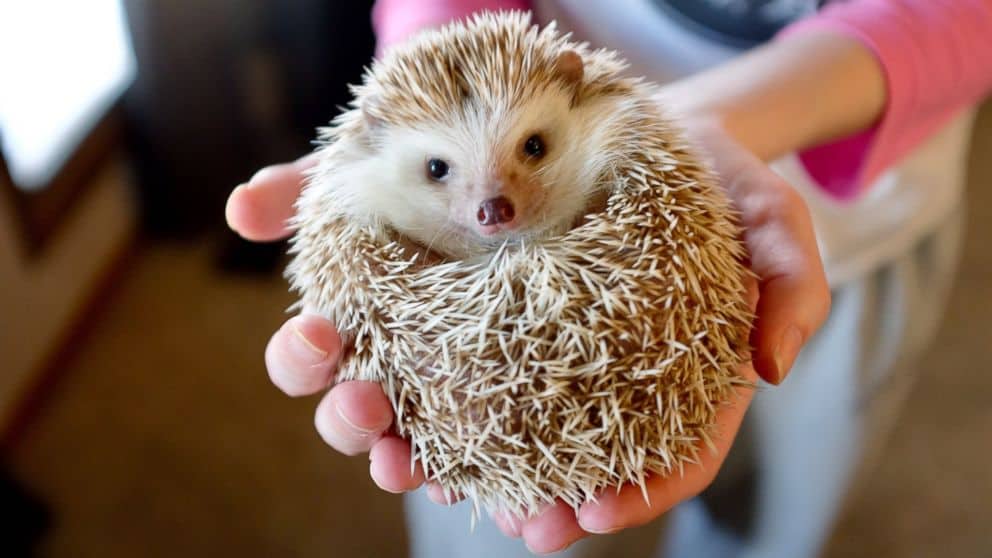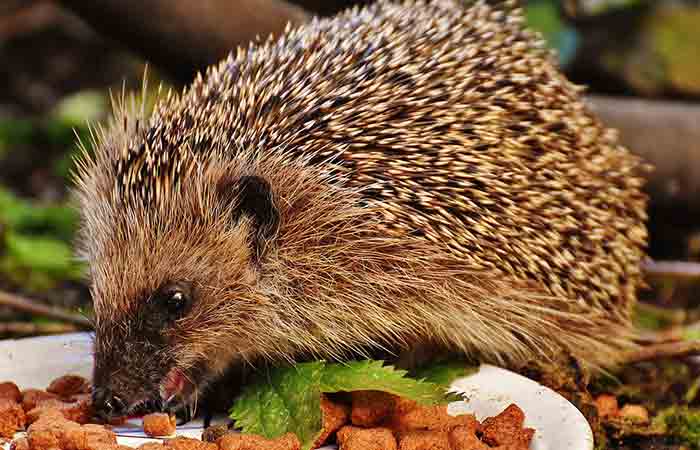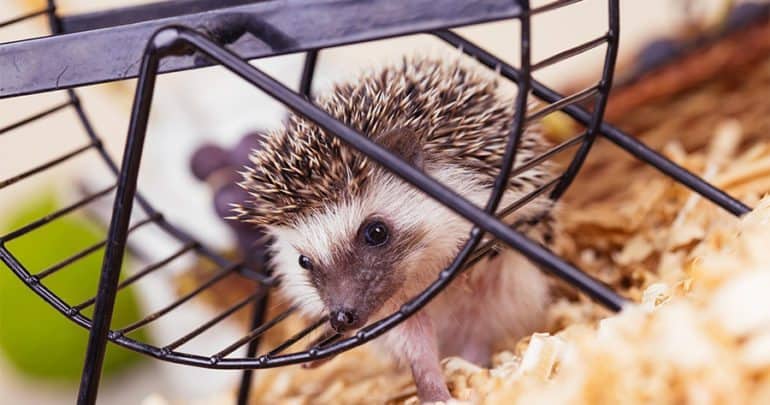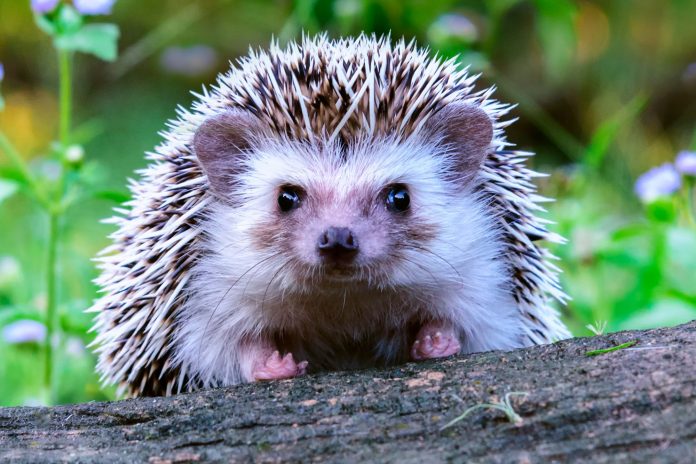In North America many of the pet hedgehogs are relatives of the Four-toed hedgehog (Atelerix albiventris) and the North African hedgehog (Atelerix algirus). This hybrid is commonly referred to as the African Pygmy hedgehog. Among the family Erinaceidae there are two subfamilies. The first being Erinaceinae, which contains five genera. These genera comprise the typical hedgehog that we think of when we hear Sonic the Hedgehog; one that is covered in quills and rolls into a ball when frightened.
The second subfamily contains the closest relative of the hedgehog, the gymnure or moonrat (Hutterer). Notably the main difference between this household exotic pet and its wild counterparts, such as the European hedgehog (Erinaceus europaeus), is size. African Pygmys are relatively small, weighing in at 300-500 grams and five to eight inches in length. They fit easily in one hand.
The European hedgehog, however, weighs in at around two to three pounds and reaches a length eight to twelve inches long. Proper handling of these big guys requires two hands. Color is also another big difference (McLeod).
Looks Sharp, Feels Sharp
Hedgehogs are easily recognized by their round bodies that are covered in pointy quills. But what makes up those quills? Hedgehog quills are simply strands of hair that are coated in keratin, the same substance that comprises human finger nails. These prickly hairs are the ultimate show of nature’s defense mechanisms. Whenever threatened, a hedgehog will curl up and tuck himself into a ball, exposing the points of his quills. Try taking a bite out of that!

Hedgehogs will also jump in an attempt to poke its predator and scare it away. Without outside influence, these quills are actually harmless. If enough force is used, they can puncture various materials. However, most hedgehogs cannot exert this amount of strength. They are also not poisonous. One may experience irritation when poked by a quill, but this is usually more of an allergic reaction than anything else. However if a hedgehog were to get into something poisonous, such as a patch of poison ivy, their quills would have the irritating oil on them that could spread to the owner.
The quills on a hedgehog should never fall out, aside from when they are young and go through a process where their baby quills are shed. This is called quilling. They cannot launch a quill at you when you forget to feed them dinner (although that should be avoided) nor can they detach them and leave them stuck in your skin. The best way to describe proper handling is akin to the man that lies on a bed of nails; increased surface area means less force pushing into one small spot. Scoop up your spiky friend from underneath slowly and with both hands covering as much as possible in order to avoid being spiked!
Diet

Hedgehogs are insectivores by nature, meaning they love to munch and crunch on bugs. Beetles, worms, crickets, you name it! Most pet stores carry a pelleted form of their food. This is ideal as a balanced diet is hard to create from scratch. Let the pet nutrition experts handle that.
However, hedgie owners beware; avoid foods with large bits of extra goodness such as banana chips, apple chips, and other hard supplements. Hedgehogs are called hedgehogs for a reason. Their pig-like nose works like that of a pig, finding food on the ground, and they eat like hogs! They may choke on large pieces of food.
Avoid colorful dyes as some research has suggested a possible link to cancer (CSPI Says Food Dyes Pose Rainbow of Risks). Supplement their food with live gut loaded (Gutloading) crickets or mealworms. Do not catch your pet’s food outside as pesticides and other hazardous contaminates might be present. Always buy live food from a pet store. A reputable website recommended by many veterinarians for exotic pet food is Exotic Nutrition.
Habitat

Like to sleep at night? Well hedgehogs sure don’t! If you house a hedgehog in your room be read y to wake up to him rearranging his cage, exercising in his wheel (or perhaps just running laps in the cage), and if you have a male and female you might hear the male whining at the female in an attempt to mate!
Also hedgehogs prefer warmer climates, with temperatures in the mid 60’s to high 70’s. Keep them out of direct sunlight as to not bother them while sleeping or cause their cage to become too hot. Avoid wired floors at all costs as they will get their feet caught while scurrying after a tasty cricket. Make sure your spiny little friend has a place to hide and sleep, as they are accustomed to this in the wild (Hedgehog Central).
As Pets
Hedgehogs fare well as pets. Keep up with cleaning a hedgie’s cage and handle him daily and he will become tamer and a wonderful addition to your family.


















